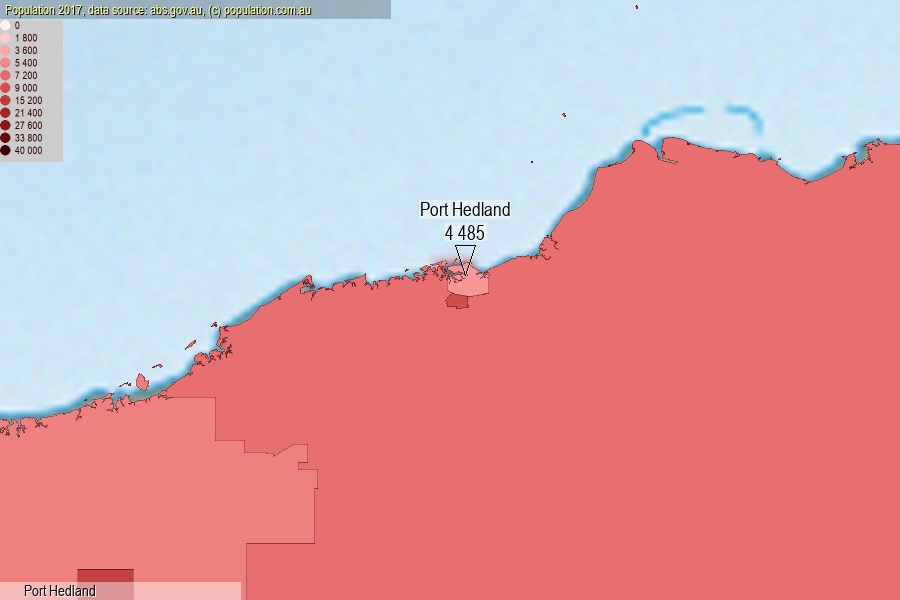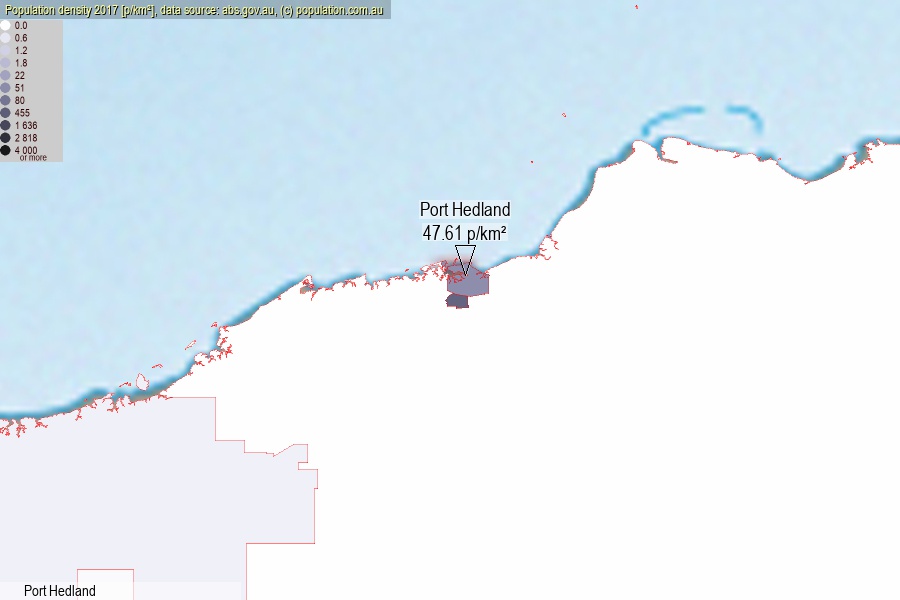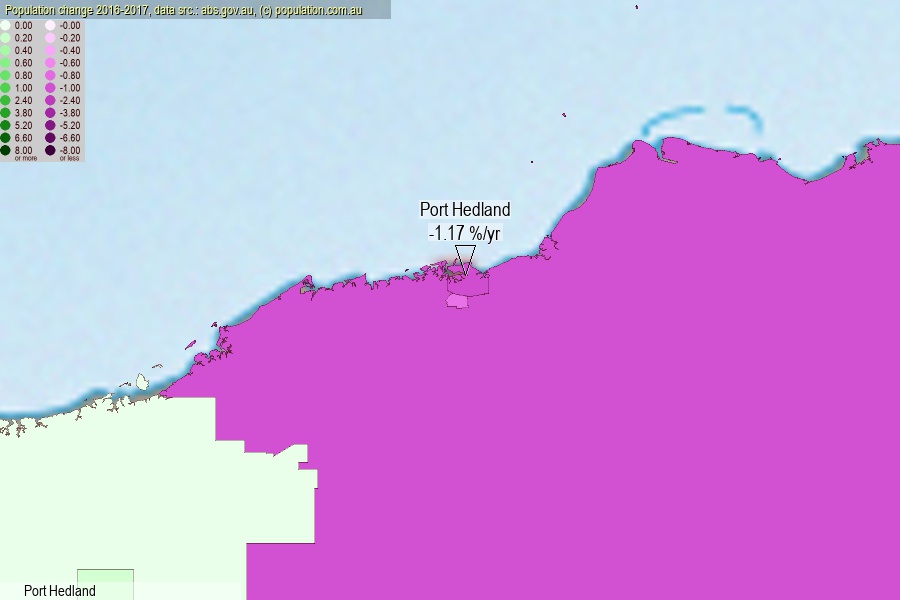 population.com.au
population.com.auLast official estimated population of Port Hedland (as Statistical Area Level 2) was 4 485 people (on 2017-06-30)[2]. This was 0.02% of total Australian population and 0.173% of WA population. Area of Port Hedland is 94.20 km², in this year population density was 47.61 p/km² . If population growth rate would be same as in period 2016-2017 (-1.17%/yr), Port Hedland population in 2025 would be 4 083. [0]



Click to enlarge. Port Hedland is located in the center of the images.
Population [people], population density [p./km²] and population change [%/year] [2]
View borders » (new window) [4]
[2001-2002] -1.41 %/Yr.
[2002-2003] -2.32 %/Yr.
[2003-2004] -3.41 %/Yr.
[2004-2005] -3.44 %/Yr.
[2005-2006] -1.62 %/Yr.
[2006-2007] -0.49 %/Yr.
[2007-2008] +1.83 %/Yr.
[2008-2009] +3.74 %/Yr.
[2009-2010] +2.95 %/Yr.
[2010-2011] +4.48 %/Yr.
[2011-2012] +1.59 %/Yr.
[2012-2013] +0.43 %/Yr.
[2013-2014] -0.30 %/Yr.
[2014-2015] -0.28 %/Yr.
[2015-2016] -2.53 %/Yr.
[2016-2017] -1.17 %/Yr.
[0] Calculated with linear interpolation from officially estimated population
[1] Read more about SA2 and Australian Statistical Geography Standard (ASGS) on abs.gov.au
[2] Population data from Australian Bureau of Statistics (Population and density: 2017; change: 2016-2017)
[3] Digital Boundaries: Australian Statistical Geography Standard (ASGS) 2016.
[4] Border coordinates are simplifyed using Ramer-Douglas-Peucker algorithm.